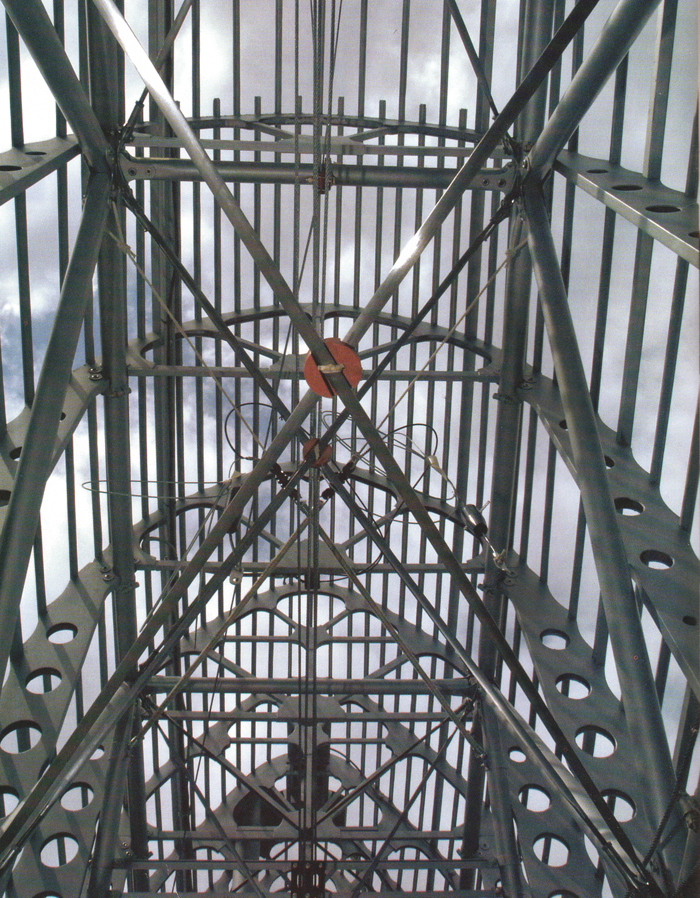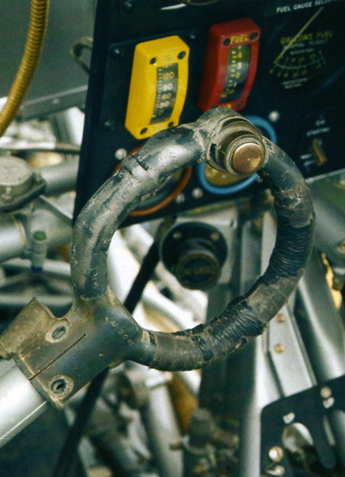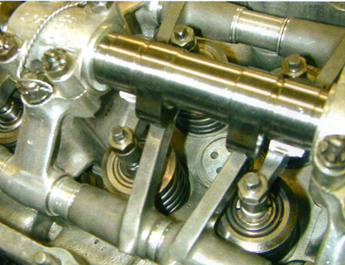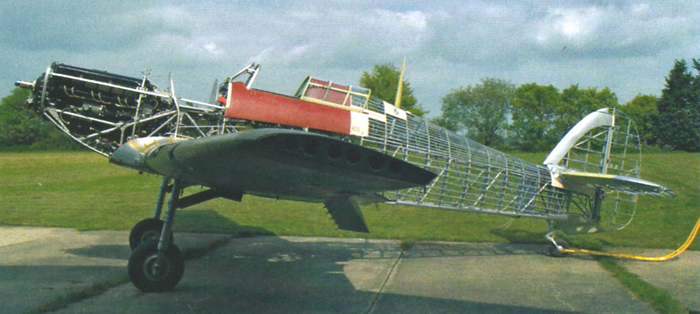FlyPast Magazine June 2005 (CONTINUED)
Superb view from inside the fuselage looking up through the 'birdcage' of ribs. |
|
BACK TO THE BATTLE Another example of these changes through its service life if that this MkI had MkII undercarriage legs, and the Tailwheel is post-1940. |
The control column spade grip, during the restoration phase. |
The rockers and their 'Merlin fingers' |
|
Such major items could be replaced but this would make the project more complex, more costly and infinitely longer. Where its Battle of Britain status could be powerfully re-instated would be in all the period fittings throughout the airframe, what Peter calls “all the trinkets”. This is where Peter’s standards shine out, the vast majority of this work will remain largely unseen – being buried deep in the fuselage and wings. A great example of a ‘trinket’ is the TR.1133 radio, the RAF’s first VHF set. R4118 would have had one of these, but they are very rare – Peter knew of only two existing, and the museums involved were not going to give them up. At an aerojumble Peter was asking yet another stall holder about a TR.1133. From behind him a passer-by said “I know where there’s one!” This was John Elvins who knew of a collector near Bath who had one. Over a period of time, he was persuaded to release the radio and John got it working. The TR.1133’s tuning is too crude for modern-day radio transmission, it blasts our on far too wide a band, So, although Peter had a working and wholly accurate radio in his Hurricane, he can’t actually use it – that’s determination to see perfection! The decision was taken to preserve the original 12-volt electrical system. This was not done lightly, because it means that R4118 needs a ground power unit to start it. It also meant 12-volt bulbs for the undercarriage indicator! Peter was beginning to despair of ever finding such things. Then he was introduced to a US-based Internet search site – ‘Parts Base’. A stock turned up in Auckland, New Zealand. MERLIN FINGERS R4118 was fitted with a Merlin III, effectively the first production version of the classic engine. Like most other things about this MkI Merlin IIIs are also thin on the ground. Without the help of Dr Michael Fopp and the RAF Museum, R4118 would not be in the air. The Museum lent a MkIII to become the basis of the flying engine – a superb and far-sighted gesture. Maurice’s approach to the Merlin restoration was “absolutely meticulous” – every bearing being measured to a tenth of a thou. The pilots who have flown the Hurricane say that it is the smoothest-running Merlin they’ve known. One modern improvement has been made to the engine, the installation of ‘Merlin Fingers’. Where the cams rotate on the rockers, originally there was a chrome-plated pad. In time this chrome would break up, causing a sharp edge and wear to the engine. A Canadian company developed a system post-war of machining away the pad and putting a solid lump of tungsten in its place. These are ‘Merlin Fingers’. Maurice now makes these ‘fingers’ and they are very effective. An inspection in early March showed the parts to be immaculate. GERMAN BLADES But more parts were needed, and the Ulster Aviation Society over at Langford Lodge in Northern Ireland pitched in with the example it held. In return it wanted a static replacement to go on its Merlin. Additionally, Peter Wood – being another Rolls-Royce aficionado – was of great help on the project in a variety of ways, especially with regard to the engine. Peter Vacher finds it incredibly ironic that after all of R4118’s exploits during the Battle of Britain, the reborn aircraft had no choice but to have Hoffman blades fitted. The best Germany can offer! PAST MASTERS As the airframe came together, with the engine and the propeller assembly coming along more or less in parallel, time came to apply the colour scheme. Bill Bishop, a QANTAS captain, spent a couple of years researching the colour scheme and had done a superb job. R4118 would fly in the colours it wore in August 1940 with 605 (County of Warwick) Squadron based at Drem, to the east of Edinburgh. The codes were ‘UP-W’ – hence the Hurricane’s civil registration – G-HUPW. Clive Denney and the Vintage Fabrics team applied the fabric and painted Papa-Whiskey to meet Bill Bishop’s researches. In the search for the venue for the test flights, Marshall of Cambridge “shone through” with an offer of the use of hangar space at Cambridge Airport…”and have been superb”. Pete Kynsey took the Hurricane on its first flight on December 23 last year, and test flying up to the granting of a Permit to Fly has been smooth. Thanks to Marshall, R4118 will be based at Cambridge for the remainder of the 2005 ‘season’. Peter’s wife Polly is a famed long distance solo flyer in her distinctive Piper Dakota light aircraft. Polly has been training in Florida, step by step with Tailwheel types, ending with a North American R-6 Texan, so that she can fly the Hurricane in due course. Polly’s record-breaking flights were sponsored by Shell and this goodwill has transferred to the Hurricane. The company will sponsor the fuel and oil for 2005. It is hoped that son Julian, currently flying Boeing 747s, will also pilot the family Hurricane. And will Peter get to fly the aircraft he knows inside-out, year-by-year? ‘No’ is the answer. He said that “you have to be quick and out-think such a powerful aircraft.” He’s perfectly content knowing what an achievement it has all been and gets immeasurable satisfaction watching it fly. Peter’s real passion for Rolls-Royce has taken wings. |
|
|
|
| Back | Next |



